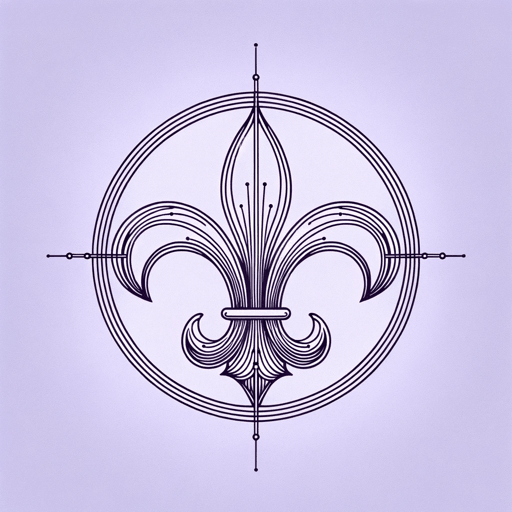70 pages • 2 hours read
Alexandre DumasThe Three Musketeers
Fiction | Novel | Adult | Published in 1844A modern alternative to SparkNotes and CliffsNotes, SuperSummary offers high-quality Study Guides with detailed chapter summaries and analysis of major themes, characters, and more.
Symbols & Motifs
Fleur-de-Lis
The fleur-de-lis, a stylized image of a lily flower, is a symbol commonly associated with France that appears on many coats-of-arms and regional flags. In this novel, however, the fleur-de-lis is not a marker of national pride; rather, it is a brand burned into Milady’s shoulder to identify her as a convicted thief. In the 17th century, severe punishments often comprised not only prison time, but also permanent physical disfigurement in the form of a fleur-de-lis brand to warn anyone interacting with the criminal in the future. Shockingly, the fleur-de-lis brand means that criminals are never done atoning for their crimes: When Athos sees this brand on Milady after marrying her, he decides that the only fitting thing to do is kill her.
In the novel, Milady’s brand is also important because it is a rare physical characteristic, especially in women of the upper class—its relative rarity allows d’Artagnan to recognize that Milady is Athos’s wife. The brand is irrefutable proof of Milady‘s identity, cutting through her many aliases.
Romantic Fantasies
Romantic fantasies are an important motif in The Three Musketeers. Characters are more interested in the narrative of romance than in real love.
Related Titles
By Alexandre Dumas
Featured Collections
9th-12th Grade Historical Fiction
View Collection
Action & Adventure
View Collection
Books Made into Movies
View Collection
Books that Feature the Theme of...
View Collection
Challenging Authority
View Collection
European History
View Collection
French Literature
View Collection
Historical Fiction
View Collection
Loyalty & Betrayal
View Collection
Memorial Day Reads
View Collection
Military Reads
View Collection
Power
View Collection
Revenge
View Collection
School Book List Titles
View Collection
Teams & Gangs
View Collection
The Past
View Collection
TV Shows Based on Books
View Collection



